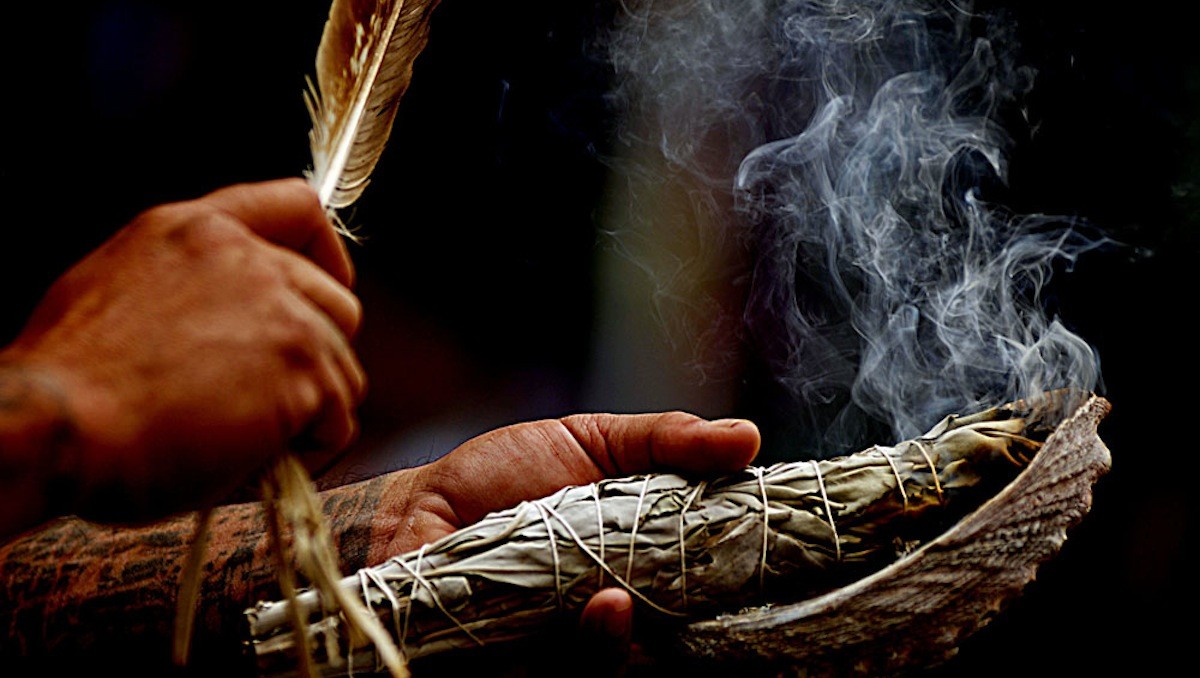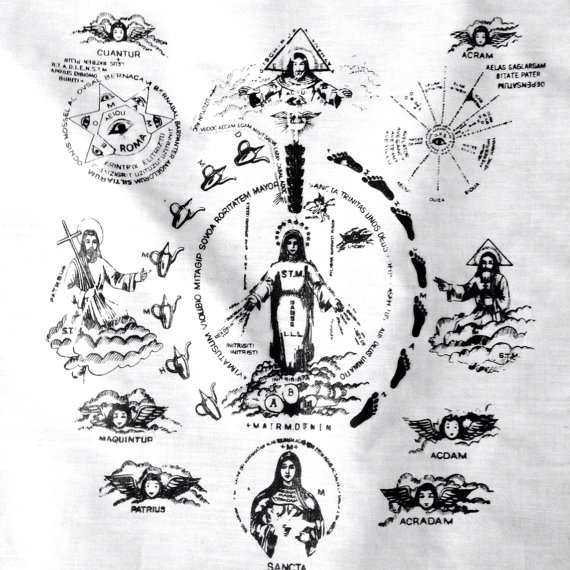We are quiet familiar with the way of Herbolarios who utilize different herbs and plants to cure illnesses. Most would even remember the old man in their barrio known as ‘Magtatawas’ who, through candles, can diagnose the malady of a person. But those are only the tip of the iceberg of folk healing; there is more than just candles and brewed leaves to understanding these complex and interesting practices and roles.

Similar to a jack of all trades, a folk healer doesn’t just stick to a single method in their craft as caretaker of their people. Fusing eclectic knowledge from understanding the curative properties of plants to learning mysterious chants, their craft is something that is worth our attention. Perhaps looking deeper might allow us to see that, beyond their strange ways, they ,may be some of the learned men and women of our community.

Be Healed by the Green
Typically, the Herbolario is the most iconic role of a folk healer. Herbs, Plants and Roots – both common and exotic – are their version of medicines which they are known for. Often they use various parts of a specific plant to create a drink like the Talimughat which can be taken orally to counter disease.
For external maladies, they often use Banos or Haklop. Banos, which means “to bathe” can be done by brewing certain leaves in water that will be used to bathe the patient, cleansing his or her body. Haklop on the other hand is done by applying special oil on a leaf, which is then heated or smoked before it will be applied to the affected areas of the body.

The Magic of Massage
Hilot, an ancient Filipino healing art, focuses on minor to severe physical injuries like sprains, fractures and dislocations. A Manghihilot is known to be a skilled masseur that can correct bone alignment, restoring it to its proper form. They also utilize herbs and oils for their healing sessions. Besides this, they are also knowledgeable with the concept of Init at Lamig (hot and cold) wherein they can distribute the neuro-electricity in one’s body parts through pressure and thus helping it function.
There is a belief that becoming a manghihilot is a gift that only a few can acquire. Some say that those that who are born in breech position (feet first) have a chance to possess the gift.

The Power of Words
Words can hurt people more painfully than knives and guns, but for a Manananawal, words can be as potent as your trusted brand of medicine. Taken from the word “tawal” (which pertains to a magic spell) a Manananawal only needs a piece of paper, or often times his or her voice to speak chants or orasyon to heal or cure someone. These words are sometimes a mix of Latin/Spanish prayers and their own dialect or language which is either spoken or whispered.
Sometimes, the orasyon is written on a piece of paper by the Manananawal which will be kept by their patient until they recover from their disease. In addition to this, some practitioners of Filipino Martial Arts incorporate the usage of orasyon for healing their injuries during fight which adds a more mystical flavor to their art.
Dark Side of Folk Healers
Healers are usually known as benevolent individuals responsible for curing and restoring the health of their constituent. However, some of them can oppose their nature as preserver of health and wellness for a serious reasons like revenge. This may also occur when someone hurts their loved one which may cause them to resort to dark arts and sorcery. Such is the polarity that sometimes conflicts within themselves as both life giver and taker.
The mambabarang attune themselves in the way of sorcery to bring pain to their victim by implanting or inserting materials like nails, stones, or insects inside the body of their victim. There are two ways for them to conduct this: one is Barang de Manyka which similar to the use of Voodoo Dolls. The Mambabarang uses a toy doll as a medium to represent the body of their victim. The other method, Barang De Calavera, is where the skull of a human represents the soul of the Mambabarang’s target. These methods fall down to what we know as homeopathic or imitative magic wherein it explains the concept of “like produces like”. No matter what the mambabarang does to the doll, it will also happen to their target since the doll “imitates” or represents their body.
There are also instances where a mambabarang can switch to contagious magic – where they cast a spell or charm through the things that are associated with their victim. An example of this is Bansol where a mambabarang uses the soil from a foot print or the spot where the target urinated. La-ga utilizes something that belongs to the target of the mambabarang – like a piece of their dress, hair, or finger clippings which will be mixed with seven scoops of sea water taken during high tide and then boiled together.
In an article written by Samuel Gaabucayan entitled “The Medicine Men of Agusan in Mindanao” , there are instances when the mambabarang was sought by people for help when they suspected they were afflicted by a curse or sickness from another mambabarang. However, these mambabarang never resort to inflicting harm on the alleged sorcerers, but instead use rituals to prod their conscience which will lead them to take away the spell or curse and warn them to never do it again.
In extreme cases however, they can conduct a ritual called Barang De Sombalik; a counter sorcery which can really cause death to the maligned mambabarang. According to Gaabucayan, though a person can be both a folk healer and sorcerer at the same time, it seems that the majority will practice their healing arts more often than inflicting harm through magic or sorcery.

Special Techniques of Tribesmen
The Kankaney People provides different kinds of specialist with each of them possessing specialized techniques in diagnosis. Mansipnok dissect the body of offerings to identify the illness of their patient. The Mangegey is more of a traditional shaman that falls into trance which enables them to contact the spirit that causing the sickness. Mambaknao are people who can interpret readings from different sources like water, while a Man-ila can diagnose their patient by looking into their eyes. Lastly is the Mansingeng who are only sought when the disease is caused by sorcery or witchcraft with evil intentions.
For the Besao People, sounds can greatly affect the health, the mood and spirituality of the people. That is why they incorporate sounds into their rituals to gain the help of good spirits and even to exorcise the evil ones. Igorot Groups acknowledge the importance of relationships between the living and the spirits of the dead, and how that influences the wellness of the people.
The Healing That Never Ends
Folk healers have been around in our society ever since our ancestors first interpreted a malady as a punishment from spirits or gods. From the Babaylan down to our local albularyo today, the tradition of folk healing remains in our community despite the more scientific and trusted approach of curing disease with modern medicine in hospitals being available. There are so many reasons why people will still choose folk healers over doctors: financial capability, distance, and many more. There are two other reasons why folk healers are still with us – they carry a figment of our culture and tradition that is alive and well, and they not only heal the body as part of their vocation or calling, but also the soul.
Sources:
Hilot: The Science of the Ancient Filipino Healing Arts by Bibiano S. Fajardo and Ma. Aleli V. Pansacol
The Medicine Men of Agusan in Mindanao, Philippines by Samuel Gaabucayan
Science and Spirituality Go Hand-In-Hand Among Mountain Tribes by Desiree Caluza
CLICK HERE TO READ MORE ARTICLES ABOUT FILIPINO HEALERS AND SHAMANS
Currently collecting books (fiction and non-fiction) involving Philippine mythology and folklore. His favorite lower mythological creature is the Bakunawa because he too is curious what the moon or sun taste like.


